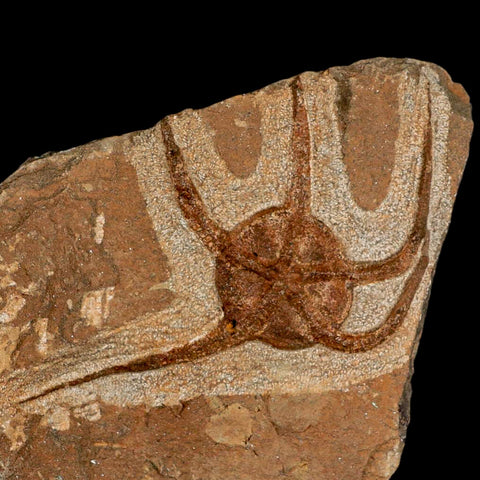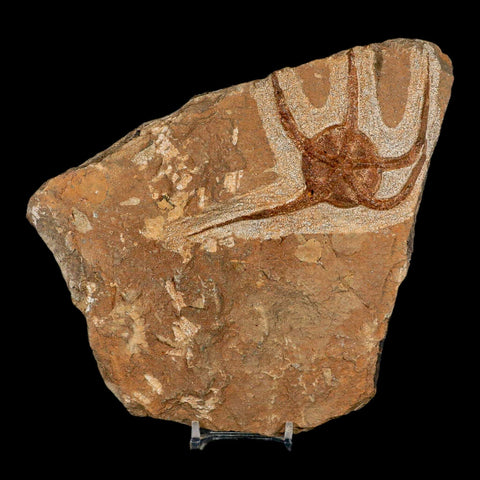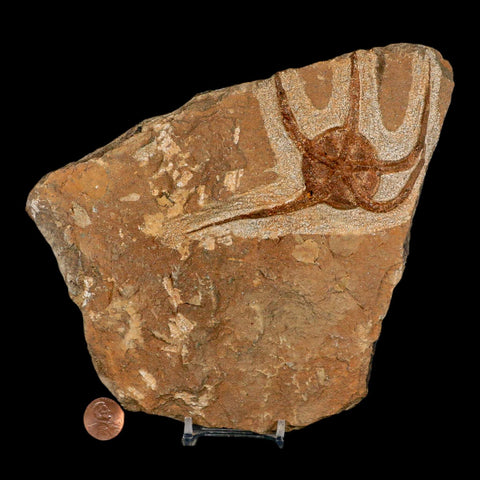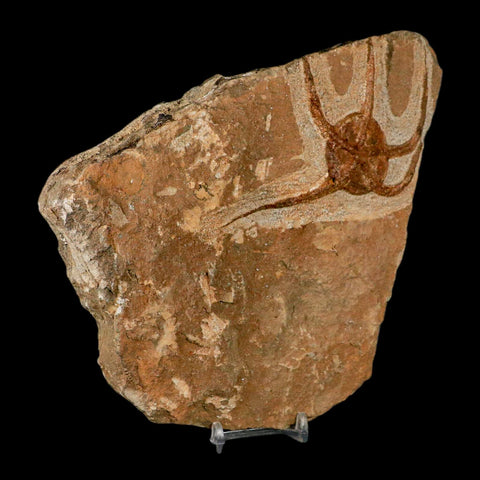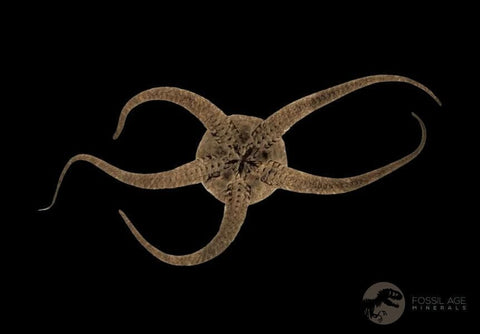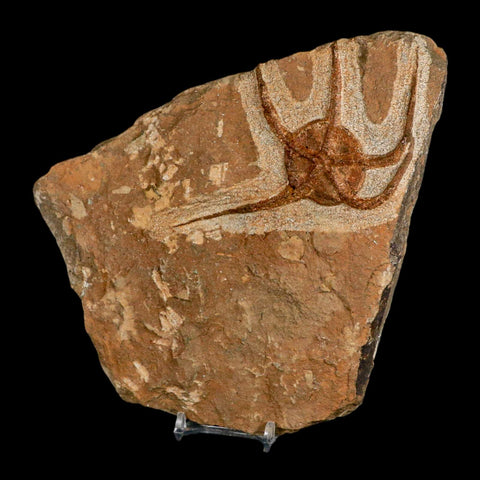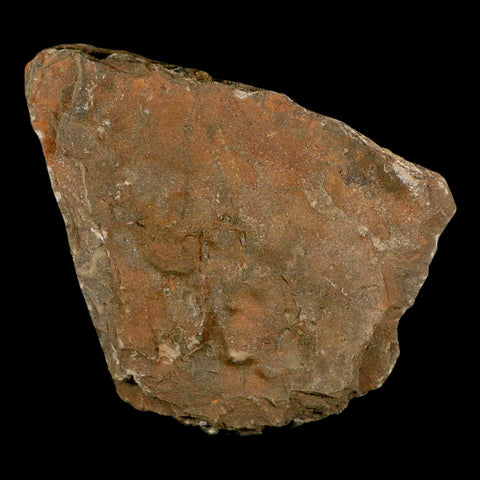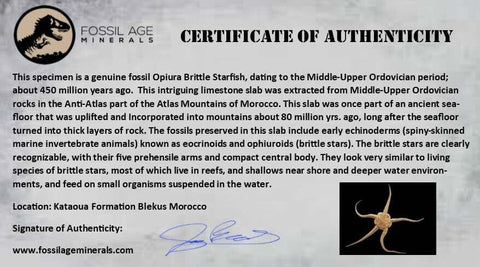4.9" Brittle Star Ophiura Sp Starfish Fossil Ordovician Age Morocco COA & Stand
Location: Kataoua Formation, Blekus, Morocco
Weight: 2 Pounds 11.4 Ounces
Dimension: 7.5 Inches Long, 0.6 Inches Wide, 1 Inch Thick (Plate)
Starfish Dimensions: 4.9 Inches Long, 2.9 Inches Wide
Comes with a Certificate of Authenticity.
Comes with a Free Stand.
The item pictured is the one you will receive.
Brittlestar Ophiura Sp
Discover a remarkable limestone slab from the Middle to Upper Ordovician period, around 450 million years old, sourced from Morocco’s Anti-Atlas Mountains. This extraordinary fossil was once part of an ancient seafloor that rose to form mountains 80 million years ago. You'll find beautifully preserved early echinoderms, including brittle stars with their distinctive five flexible arms and compact bodies, closely resembling modern species found in reefs and shallow waters. Also featured are rare eocrinoids, likely Ascocystites, with slender stems and delicate arm-like structures used for filtering microscopic food from the water. A truly captivating piece for any collector or enthusiast.
Despite the name, eocrinoids were unrelated to crinoids (sea Lilies) and differ in several morphological features from ancient and modern crinoids. However, like many fossil crinoids, their elongated stem allowed for attachment to hard substrates and the possibility of raising themselves higher off the seafloor.
There appear to be several larger individuals along with several much smaller ones. Those smaller animals may be juveniles of the larger form or a different species. Do you notice how the smaller individuals often seem to be in close contact with the brittle stars? We are often led to wonder whether the brittle stars were feeding on the smaller echinoids.

Please be aware of the nature of fossils:
Being buried under the ground for millions of years under tons of pressure tends to be rough. No fossil comes out of the ground whole and perfect. Most fossils have undergone some restoration, while others are altered by man simply to enhance their presentation in different ways. The workers in Morocco do a very professional job of unearthing and preserving these natural treasures. These are part of the natural beauty of the fossil and are not considered defects.


